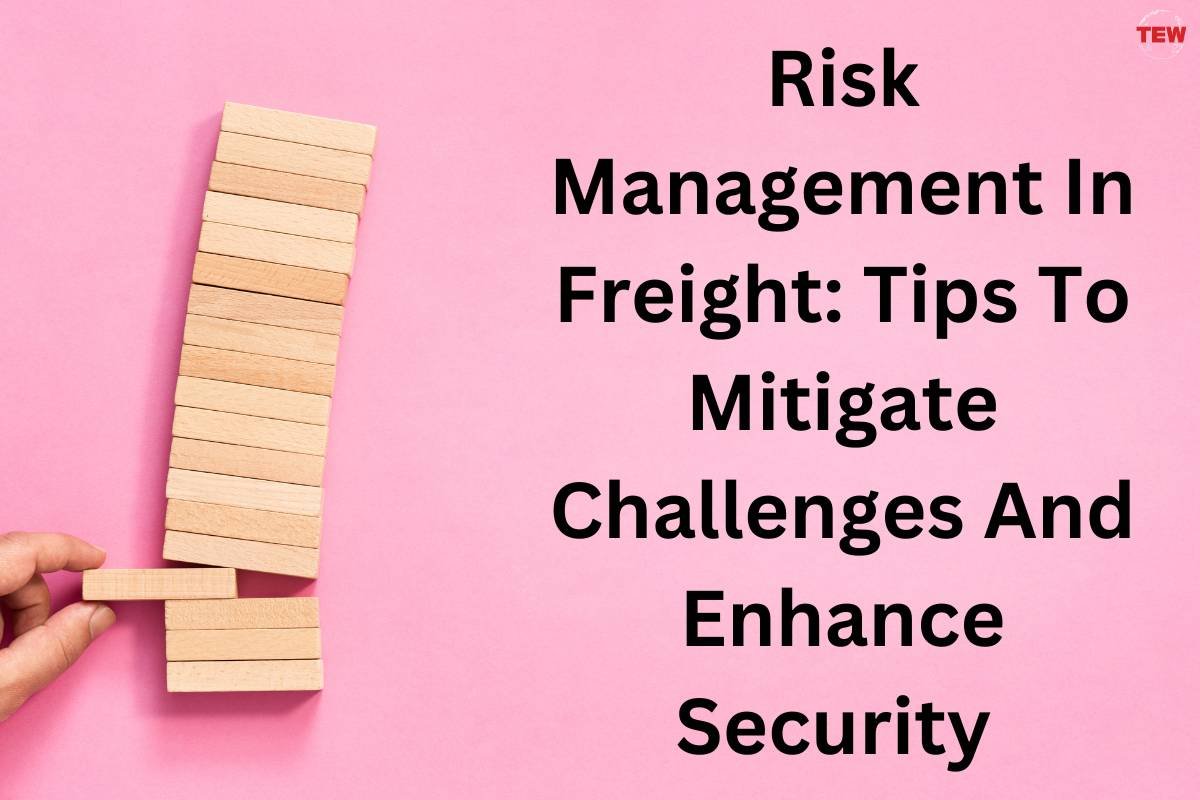In the realm of freight transportation, risk management plays a pivotal role in ensuring the safety and security of cargo in transit. The freight industry has evolved significantly over the past few decades. However, with such growth comes inherent risks such as freight fraud or cargo theft. Therefore, to succeed in this dynamic sector, ensuring the security of your freight is paramount. Embracing effective risk management strategies guarantees not just the safety of your goods but also the trust of your clients. Here is a comprehensive guide to help you fortify your freight operations, ensuring each delivery sails smoothly to its destination.
Here are 6 Tips To Mitigate Challenges And Enhance Security in Risk Management In Freight:
1. Assessing Potential Risks
Assessing potential risks forms the backbone of any robust risk management strategy in the freight sector. Begin by scrutinizing your supply chain. Delve into every process, from sourcing materials to delivering the final product, pinpointing any potential weak points. This in-depth analysis can spotlight vulnerabilities that, if ignored, can become costly pitfalls.
Next, delve into historical data. Examining past incidents gives valuable insights that can help you identify patterns and anticipate future challenges. For example, you may have dealt with significant freight fraud cases before—these deceptive practices within the transportation sector range from falsified shipping documents to counterfeit bills of lading.
Such malicious activities often result in businesses incurring unexpected costs or receiving sub-standard goods. Thus, being alert to these deceitful tactics is essential. Recognizing risks enables you to develop strategies to lessen their impact or prevent them altogether.
2. Implementing Technology Solutions
In the digital era, relying solely on manual oversight can leave gaps that criminals can exploit. But, with the right technological tools, you can seal these loopholes effectively. Consider integrating tracking systems into your operations. These tools keep you updated on the whereabouts of your freight in real time and enable swift intervention in case of diversions or delays.

Additionally, advanced software designed to detect inconsistencies in shipping documents can be a game-changer. Such programs can immediately flag anomalies, ensuring you catch potential issues before they become significant problems.
Embracing technology doesn’t just bolster security; it enhances efficiency. Automated tools reduce the need for manual intervention, streamline processes, and provide analytical insights, refining your risk management techniques and aligning them with contemporary needs.
3. Training Staff
While technology offers advanced solutions, human judgment remains invaluable in detecting potential threats. It’s imperative that your team understands the intricacies of the freight industry. Even with advanced tools and protocols in place, human discernment remains a critical defense against potential threats.
Frequent training sessions are a starting point. By acquainting your staff with the latest fraud techniques, red flags, and best practices, they become vigilant observers. These sessions foster a collective sense of responsibility toward safeguarding the company’s interests. Moreover, creating an environment where employees feel empowered to voice concerns or report suspicious activities is instrumental. It promotes active participation in the company’s security measures.
Fostering a culture of awareness, vigilance, and preparedness, positions your business to address challenges head-on, keeping your freight operations secure.
4. Establishing Clear Protocols
Well-outlined guidelines are the bedrock of efficient operations. Firstly, precise shipment and receiving processes are essential. When each consignment follows a set path with defined checks and verifications, the chances of unauthorized or fraudulent shipments diminish significantly. These processes act as a filter, ensuring only legitimate transactions get the green light.

Emphasizing transparency is equally vital. You eliminate ambiguities that often aid deception by mandating vendors, partners, and even internal teams to provide comprehensive breakdowns of costs, services, and actions.
Clear guidelines act as protective barriers, guiding your team and ensuring your freight operations remain transparent, accountable, and, most importantly, secure.
5. Partnering With Trusted Entities
In a realm where collaborations can amplify success, aligning with the right partners is essential to securing your freight activities. Start with thorough background checks. Before entering any collaboration, understanding a potential partner’s history, credibility, and reputation in the industry can save you from future pitfalls. These checks act as your initial defense, filtering out entities with questionable backgrounds.
Nurturing relationships is the next crucial step. Building mutual trust over time with long-term partners provides additional protection. When both parties share common goals and values, the chances of miscommunication, errors, or deceit decrease significantly.
Aligning with reputable partners forms a protective circle around your operations, ensuring your path is walked alongside people genuinely invested in your success.
6. Insuring Your Freight
In the freight industry, where numerous variables can influence the journey from source to destination, insurance acts as a safety net, protecting you against unforeseen challenges. Opting for a comprehensive policy is a wise move. It covers a spectrum of potential issues, from damage during transit to the pitfalls of freight fraud.

Most importantly, it’s essential to review your insurance policies periodically to ensure their continued relevance. As your business evolves, so do its vulnerabilities and needs. Regularly assessing and adjusting coverage guarantees adequate protection, regardless of changing circumstances.
Conclusion:
Navigating the freight industry’s challenges demands diligence, vigilance, preparedness, and adaptability. Prioritize your business’s security by implementing the above strategies. By staying ahead of the curve, equipped with knowledge and the right tools, you’re safeguarding your shipments, securing your brand’s reputation, and ensuring sustained growth. Addressing the multifaceted landscape of freight challenges, the article emphasizes the need for proactive risk management measures to minimize potential losses.




